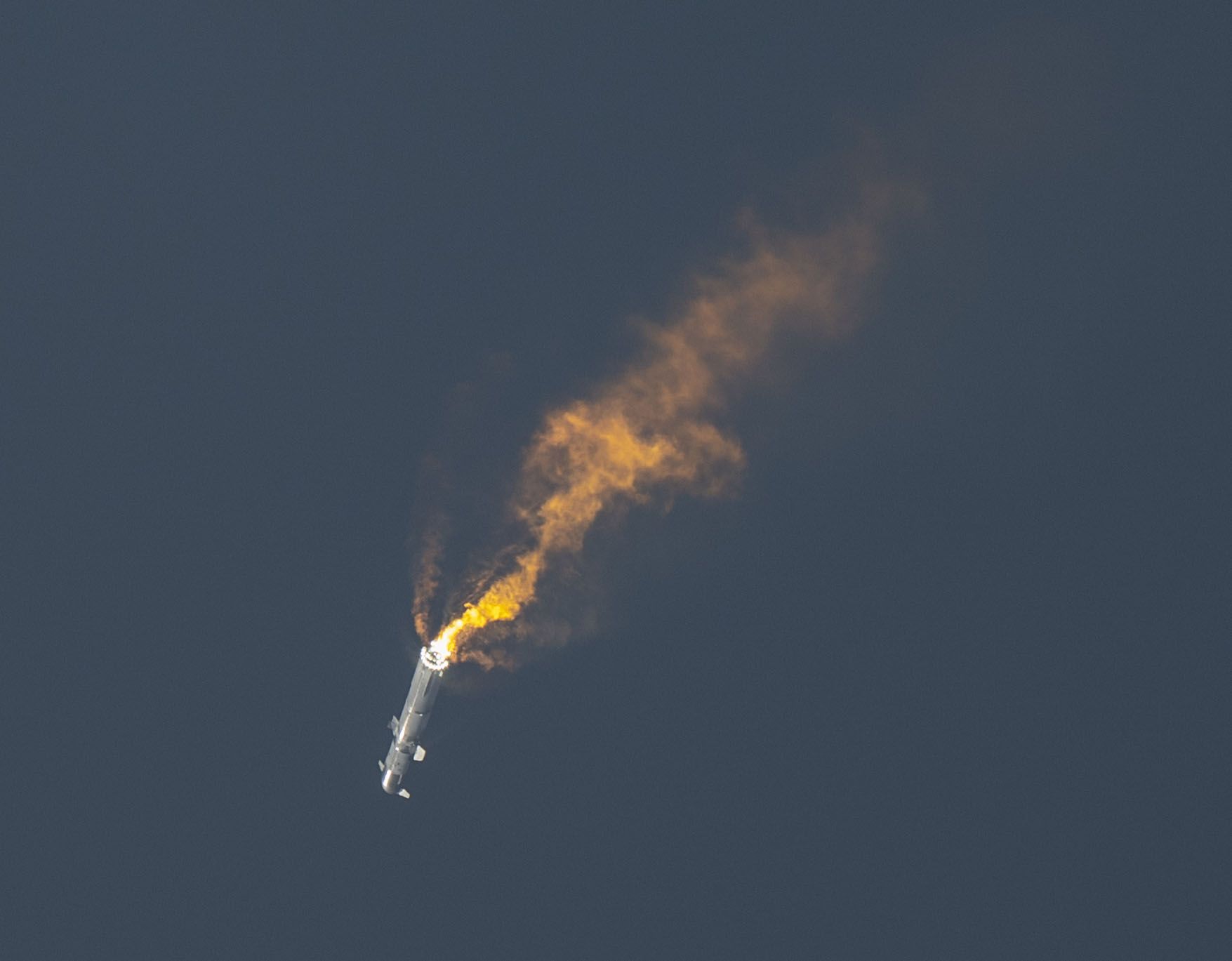Welcome to DU!
The truly grassroots left-of-center political community where regular people, not algorithms, drive the discussions and set the standards.
Join the community:
Create a free account
Support DU (and get rid of ads!):
Become a Star Member
Latest Breaking News
Editorials & Other Articles
General Discussion
The DU Lounge
All Forums
Issue Forums
Culture Forums
Alliance Forums
Region Forums
Support Forums
Help & Search
Whoopsie, SpaceX Blew Up Two Rockets and Punched a Massive Hole in One of Earth's Layers

November 18, 2023, wasn’t a great day for the commercial spaceflight company SpaceX. While testing its stainless steel-clad Starship, designed to be the company’s chariot to Mars, the spacecraft exploded four minutes after liftoff over the skies of Boca Chica, Texas. Filling a metal candle with more than a thousand tons of propellant and flinging it into outer space has always run its fair share of risks (and explosions), but this particular event—occurring around 93 miles above the Earth’s surface—allowed scientists to closely study one poorly understood aspect of human spaceflight: What damage do rockets inflict on the Earth’s all-too-important ionosphere?
Lying at the edge of the planet’s atmosphere and outer space some 50 to 400 miles above the surface, the ionosphere is a sea of electrically charged particles vital to global radio and GPS technologies as well as protecting us from harmful solar rays. Because of its important role in the everyday function of modern society, scientists are eager to understand how disturbances in the ionosphere can impact life on Earth, and that’s why team of researchers from institutes and universities in Russia and France analyzed the explosion of the tallest and most powerful rocket ever built. The results were published in the journal Geophysical Research Letters. Although bad news for SpaceX, the explosion oddly presented a rare opportunity to study aspects of the ionosphere that would, under normal conditions, be too weak to detect.
“Such catastrophic phenomena, such as the explosion of the Starship, are interesting precisely because you can see effects that equipment is not able to detect in weaker events,” the scientists told TASS, a Russian state-sponsored news agency. “Analyzing the data and understanding their nature, we understand more deeply the structure of the ionosphere [and] the nature of the phenomena that occur in it.” The ionosphere is regularly impacted by external natural phenomena. Volcanic eruptions, geomagnetic storms, and solar flares regularly crash against the ionosphere and create a dazzling display of colors known as the Aurora Borealis and Australis, which typically propagate close to the planet’s poles (though not always). However, there’s also a well-documented history of human-made rockets ripping open holes in this electrically-charged protective layer. In July 2023, Spaceweather.com reported a “bleeding” aurora that persisted for 20 minutes following a SpaceX Falcon 9 rocket launch, and a rocket carrying a U.S. Space Force satellite similarly punched a hole through the ionosphere, though it, too, quickly recovered.
Both of these events were caused by ionospheric interactions with rocket fuel, but the November mishap was a full-blown explosion. This new study confirms that the ionosphere experienced a “large-amplitude total electron content depletion,” likely reinforced by a fuel exhaust impact of the Falcon Heavy rocket, which also exploded a little more than a minute earlier at lower altitude once it separated from the Starship. The research team collected this data from 2,500 ground stations scattered across North America and the Caribbean and found that the hole extended largely from Mexico’s Yucatán peninsula and the southeastern U.S., though the exact size of the hole is unknown.
more ... https://www.popularmechanics.com/space/rockets/a62047078/starship-explosion-ionosphere/
InfoView thread info, including edit history
TrashPut this thread in your Trash Can (My DU » Trash Can)
BookmarkAdd this thread to your Bookmarks (My DU » Bookmarks)
1 replies, 584 views
ShareGet links to this post and/or share on social media
AlertAlert this post for a rule violation
PowersThere are no powers you can use on this post
EditCannot edit other people's posts
ReplyReply to this post
EditCannot edit other people's posts
Rec (9)
ReplyReply to this post
1 replies
 = new reply since forum marked as read
Highlight:
NoneDon't highlight anything
5 newestHighlight 5 most recent replies
= new reply since forum marked as read
Highlight:
NoneDon't highlight anything
5 newestHighlight 5 most recent replies
Whoopsie, SpaceX Blew Up Two Rockets and Punched a Massive Hole in One of Earth's Layers (Original Post)
Mr. Sparkle
Sep 6
OP
FakeNoose
(35,687 posts)1. K & R bookmarked
Thanks for posting - I want to look into this a little further.
![]()